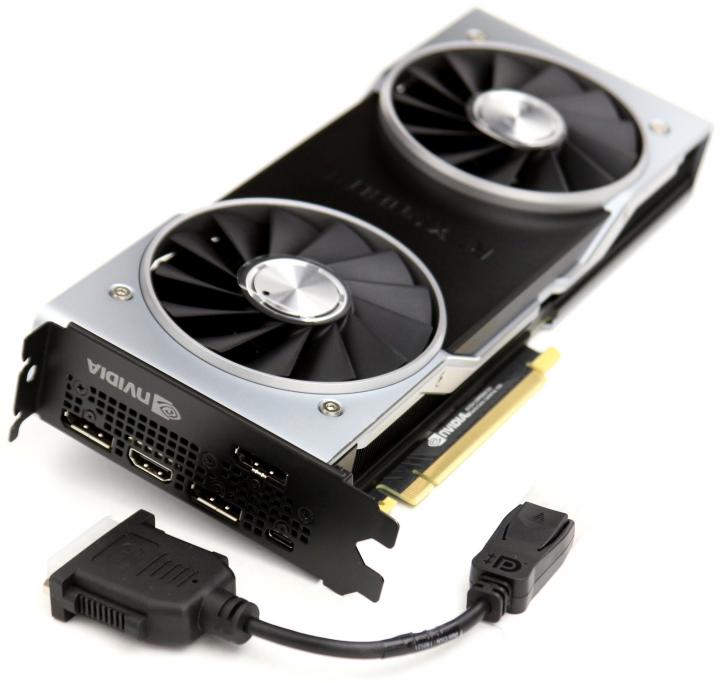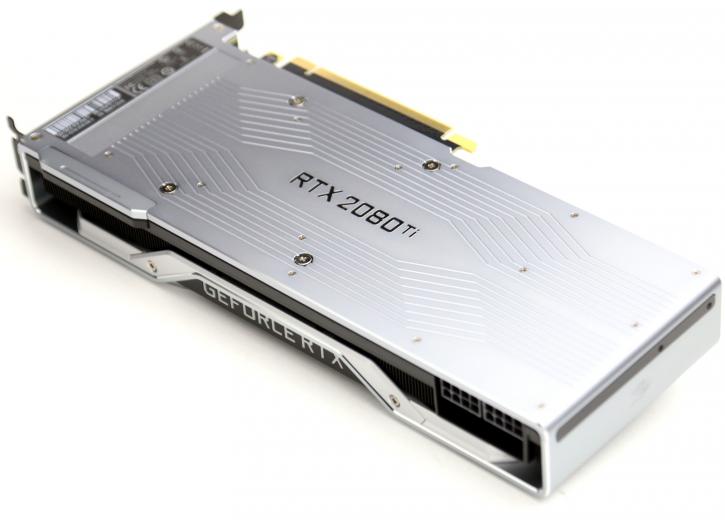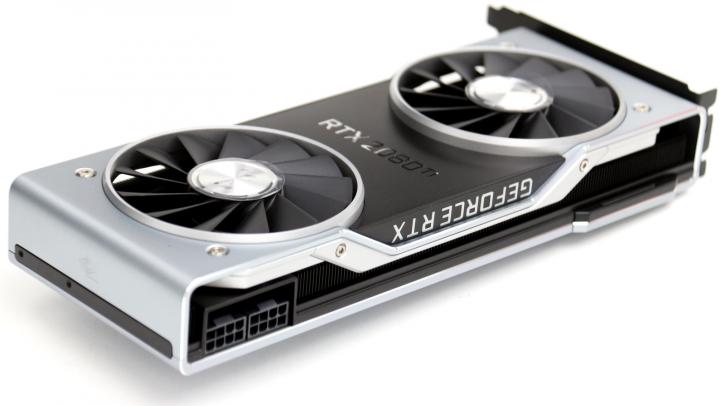Product Showcase
The graphics card has been fitted with a Turing GPU based on 12nm FinFet architecture, and with 18.6 billion transistors, it has 4352 active shader/stream cores, 68 RT cores, and 544 Tensor cores. This card has 11GB of GDDR6. I already mentioned that there is no DVI connector. The cards get a DP to DVI converter, it, however, is a passive one. I tried it but it was a mess, screen resolution issues, and corruption. I'm afraid we can not recommend you this card on DVI at this time.
Check out the backside where there is a thick sturdy metal back-plate present; there are a no ventilation gaps though, I'd like to see that improved (gaps and meshes). This might look good, but it is guaranteed to trap heat. At the backside, you will see an RTX logo. Due to the new and effective cooling design the many Nvidia limiters hardly, or do not at all kick in (under normal gaming conditions) preventing this card from throttling most of the time, we'll check that with the temp tests of course. The GeForce RTX 2080 Ti display engine is capable of supporting the latest higher resolution displays, including 4K, 5K and 8K screens.
The card has a 260 Watt rated TDP, 75 Watts is delivered through the PCIe slot, then 2x150 Watts through the 8-pin PEG (PCI Express Graphics) power connectors. We've always had our comments about the blower style coolers from NVIDIA, they allowed a thermal threshold of 80 degrees, and all cards reached that in return throttling down.
The new two-fan (13 blades) cooler design should be much better in that respect. And as long as the cards do not hit a too high-temperature target, of course, they will not throttle down, and in fact can even be clocked higher. The power delivery system has been rebuilt for GeForce RTX Founders Edition graphics cards, starting with the all-new 13-phase iMON DrMOS power supply, it should offer cleaner power delivery. Of particular note here is a new ability to switch off arbitrarily power delivery phases. Increasing phases normally increases wattage in low power modes (idle) for reduced power consumption at low workloads, which increases power efficiency. So if you're not doing anything demanding with the graphics card, the net result is less active power phases.





